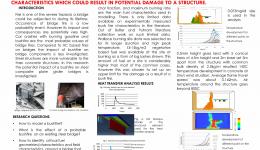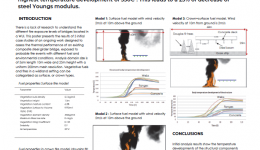Student researcher
Fire is one of the most severe hazards to which built infrastructure may be subjected to during their lifetime. Total estimated cost of fire in Australia for 2005 was AUD $12,000 million of 1.3% of GDP. This research will develop a much needed framework for decision making on the fire performance of existing (including retrofitted) steel bridges. This will include developing suitable fire curves for bush and accidental fires, calculating the residual strength after a fire event, calculating a bridge fire vulnerability index for a given structural form, and finding ways to enhance the fire resilience of bridges.
Research questions include:
- What are the realistic bridge fire curves?
- What are the available constitutive material models that account the temperature dependent behaviour for concrete, steel, and FRP, as well as the bond-slip behaviour of FRP-to steel and steel-to concrete interfaces?
- How can we model the composite action of a steel girder bridges?
- What is the significance of high-temperature creep of steel and concrete?
- What are the ways to improve the fire resistance?
- How can we protect the FRP based retrofitting works from a fire?
- What is the residual strength of the structure after a fire?
- What is the vulnerability index for a given steel bridge for a given fire?
This research will identify the vulnerability index for a structural form of a steel bridge, that is exposed to bushfires and hydrocarbon based accidental fires. It will look deeply in to the accurate numerical modeling of a steel bridges under elevated temperature. Research will investigate on the ways to enhance fire resilience of bridges. It will find the effect of fire on bridge retrofitting works. It will investigate the robustness of bridges under fire conditions. Research will develop time-temperature curve for bush fires. Results will broden the knowledge on the use of structural retrofitting works on the disaster mitigation process. A credible outcome will be presented in a form that the insurance industry can also utilize in assessing potential reductions of risk and possible premium reduction incentives to its policy owner. A sufficient disaster resilience of the infrastructure will minimize the cost of disruption to economic activities.
| Year | Type | Citation |
|---|---|---|
| 2021 | Journal Article | Damage integrated performance modelling of steel plate girders at elevated temperature. Journal of Constructional Steel Research 185, (2021). |





